The Apple iPad Air 2 Review
by Joshua Ho on November 7, 2014 9:30 AM EST- Posted in
- Tablets
- Apple
- Mobile
- iOS
- ipad Air 2
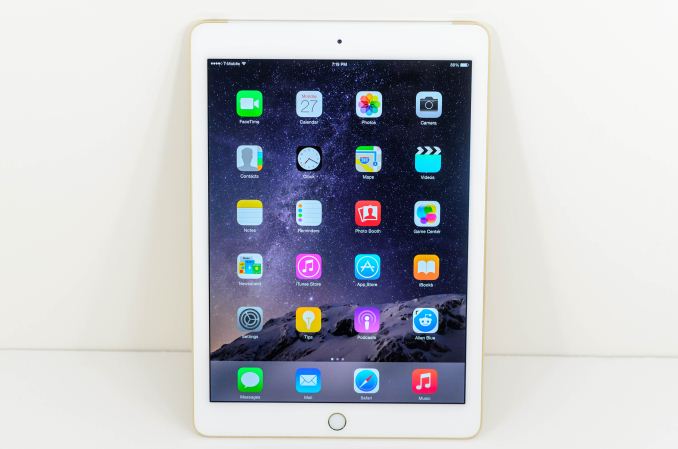
As we approach the holidays, Apple has launched a new iPad as expected. As one might expect from the name, the iPad Air 2 is more of an evolution of the original iPad Air than a clean-sheet design. This doesn’t mean that there’s little to talk about though, as Apple has gone a long way to improve every aspect of the iPad Air with this iteration. However, with this generation Apple seems to be under fire as Google attempts to push into the premium tablet space with the Nexus 9.
Without question though, the iPad line defines what an ARM-based tablet is. The iPad Air 2 is undoubtedly a part of this lineage with its focus on a large touch-screen display. This level of design minimalism is responsible for at least part of the original reaction to the tablet as a “large phone”. However, by virtue of its sheer size there are new possibilities opened up in terms of content consumption and even content creation. In the basic definition of a tablet, the iPad Air 2 definitely fits. There’s a new SoC, more RAM, a better display lens, new cameras, and an even thinner design, but all of these things don’t change the fact that this is a 9.7” display that can only be interacted with through a touchscreen. In the interest of saving space and time, I’ve included a spec sheet below to cover all bases.
| Apple iPad Air 2 | |
| SoC | 3x 1.5 GHz CPU A8X |
| RAM/NAND | 2GB LPDDR3 + 16/64/128GB NAND |
| Display | 9.7" 2048x1536 IPS LCD |
| Network | WiFi only or 2G / 3G / 4G LTE SKU |
| Dimensions | 240 x 169.5 x 6.1 mm, 437g WiFi, 444g LTE |
| Camera | 8MP Rear Facing with F/2.4 aperture, 1.3MP FFC |
| Battery | 7340 mAh (27.62 Whr) |
| OS | iOS 8.x |
| Connectivity | 802.11a/b/g/n/ac + BT 4.1, USB2.0, GPS/GNSS |
As with any other mobile device, one of the most immediate impressions one can form is that of design. This may be one of the most important areas as well, because every mobile device is constantly held or otherwise handled. These devices tend to be deeply personal as well, which means that there’s a great deal more emphasis on industrial design than a desktop tower that gets shoved into a dark corner for five years at a time.
To this end, the iPad Air 2 does quite well. The design is definitely separate from the iPhone 6 line, as the metal chamfer remains, but the form continues to be quite pleasing. On the front face of the tablet, we see a single 1.2MP camera, the display, and the home button which has TouchID built in. The glass is flat, which makes it seem noticeably different from the iPhone 6 line in that regard as it meets the chamfered edge of the back cover rather than making a seamless curve. The radius of the curve is also noticeably different as a result, simply curving in towards the center of the device rather than curving out of the device. If anything, this does make the iPad Air 2 feel a bit thicker in the fingers but the device overall is still incredibly thin.
Speaking of the back cover, there’s really almost nothing to speak of on the back cover. There’s the 8MP camera and a microphone hole, but not much else other than the large plastic RF window on the top edge of the tablet. The curve of the sides does make it seem like there’s a great deal more on the back cover though. Other than the RF window, there’s a power button and 3.5mm jack on the top of the tablet. Next to the power button are the volume buttons, but curiously no mute/lock rotation switch for this generation. I suspect that the reasons for this deletion are primarily due to user confusion, although my experiences are purely anecdotal in this regard. Finally, along the bottom of the device we see the Lightning port and two speaker grilles.
Overall, the design of the iPad Air 2 is impressive. The thin feel is really quite impressive when compared against other devices, but the weight no longer feels quite as incredible as the original iPad Air when compared to the iPad 4.
Outside of the physical design, Apple has also included a selection of two cases which include the smart cover and case, which are mostly unchanged from the previous generation except to fit the iPad Air 2. I don’t have much to complain about here although the smart case has a bit more flex on the sides than I’d like. The smart cover does have enough strength in the magnets to hold the tablet by the cover, although I wouldn't recommend doing this.


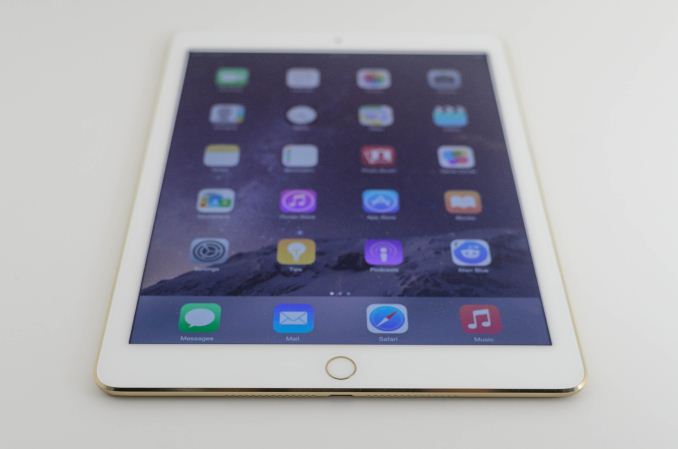
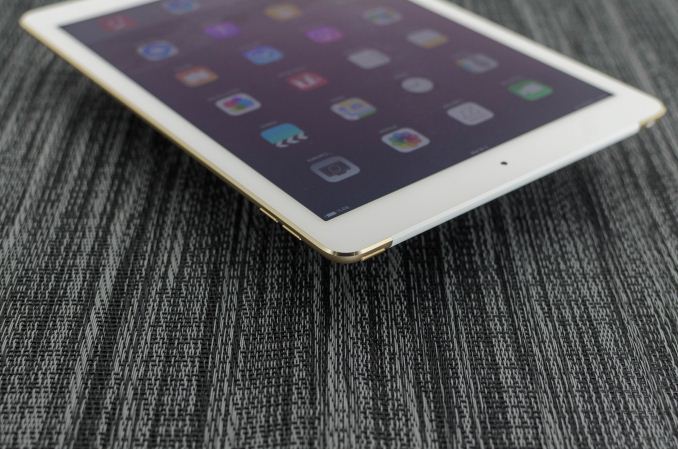
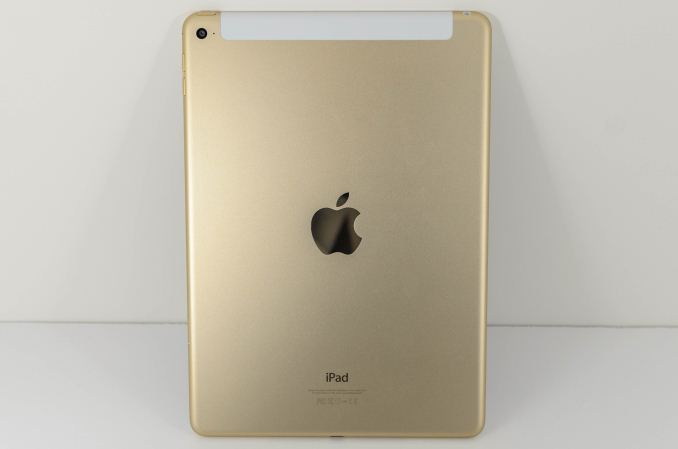

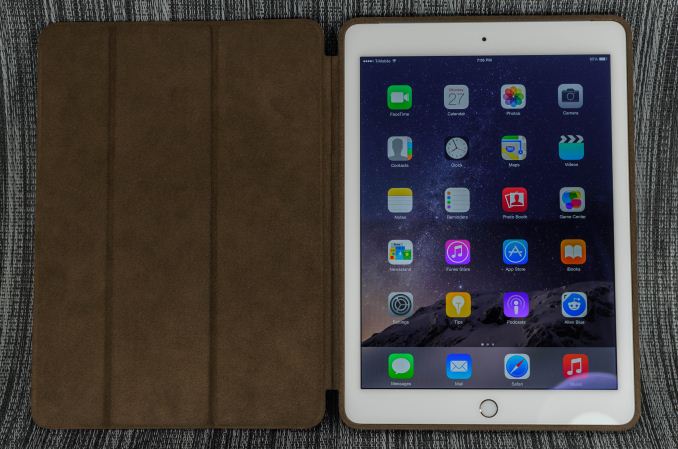








226 Comments
View All Comments
Sushisamurai - Friday, November 7, 2014 - link
I know right? It's actually really annoying, it's practically forced me to prop it up when using it for TV/movies because holding a vibrating tablet for 40 minutes was a huge pain the in the ass. I'd rather they keep the same size as the iPad Air 1, and just give me 2-4 more hours of use time (by keeping the battery size the same, increased efficiency of A8X) and NO VIBRATING tablet.Sushisamurai - Friday, November 7, 2014 - link
No, my iPad Air 2 does not reproduce this issue, even with full strength one finger push (erred on the side of not bending my iPad). However, I do have a hard plastic back case (thin) on it - applying pressure to the screen also does not produce any issues.Georges003 - Saturday, November 8, 2014 - link
I am apparently not the only one who has noticed this effect on the Air 2. See:http://www.consumerreports.org/cro/news/2014/10/ha...
http://forums.macrumors.com/showthread.php?t=18089...
hammer256 - Friday, November 7, 2014 - link
I recall it was said that Nvidia was not going to use the TSMC 20nm because it's only really ready for SoC production, perhaps because the yield is not good enough for large dies yet? But if the 20nm process can already produce chips with 3 billion transistors at presumably acceptable yield, that is well into the GPU transistor count territory.I just wonder if this holds any indication/promise that Nvidia and AMD could move to 20nm in a relatively quick time frame, say within the next year. 28nm is really getting long in the tooth. Well, at least I imagine Nvidia's next SoC should be on 20nm...
rUmX - Friday, November 7, 2014 - link
It's about volume and Apple bought most if not all of it.kron123456789 - Friday, November 7, 2014 - link
We'll see in 2 months, at CES 2015))It should be the beast)mabellon - Friday, November 7, 2014 - link
Great article Joshua,I was a little disappointed that there was no comparison against the Surface Pro 3. I am not interested in any OS/fanboy wars by any means - purely a hardware comparison. The Geekbench scores for the iPad Air 2 are (1798/4468) as shown in your article. The Geekbench scores for the entry level 1.5Ghz Core i3 Surface Pro 3 are (1569/3137) on a $280 CPU! But that's only one benchmark of course. GPU is certainly a very different beast all together as well.
I would love to see some comprehensive testing to compare ARM (especially the A8X, and 64bit K1) against Intel's offerings. The slower clocked Celerons and Core i3s are the most comparable as those laptops are closer to tablet pricing. The Core M series is coming and its clocked even slower (but has turbo) -it's fanless performance remains to be seen. Ultimately the question is... how close is ARM to truly competing with Intel in the laptop space?
And some food for thought... If a 1.5Ghz A8X is already in striking distance of Intel's low end 1.5Ghz... what would happen if Apple added turbo/higher clocks and a fan?
Impulses - Friday, November 7, 2014 - link
It's all very interesting from a technical curiosity standpoint, but until mobile OS evolve a lot more there aren't gonna be very many people cross shopping anything running iOS (or Android) vs a Surface Pro... And no one wants a Windows system running ARM hardware cause it defeats the point of running Windows.I guess the one exception to all that would be if Apple were working on OS X ARM edition...
mabellon - Friday, November 7, 2014 - link
Agreed. Very much an intellectual curiosity. Windows on ARM defeats the purpose of running Windows. Mobile OSes are not capable of fully replacing a desktop environment for productivity.Apple *could* push out an OSX ARM edition. It would be very interesting to see if they have the clout to get devs on board such a port. Maybe? Maybe it just pushes Intel to improve.
The only ARM product likely to matter in the short term for laptop compete is the Chromebook. Still not feature competitive, but if performance really is encroaching on Intel and price is cheaper, it will at least force Intel to compete on price/perf on the low end.
Aside: I also remembered AT's Surface Pro 3 review with the Core i3. Google Octane 11,600 vs 9,400 gives Intel the edge but the gap is closing fast.
kron123456789 - Friday, November 7, 2014 - link
iOS is OS X ARM ediition, lol.